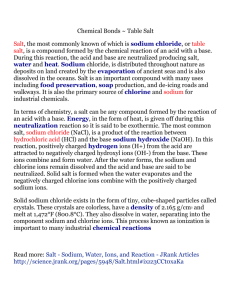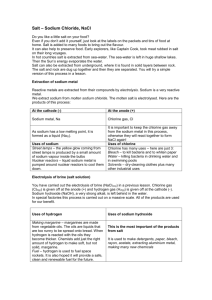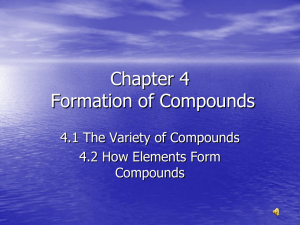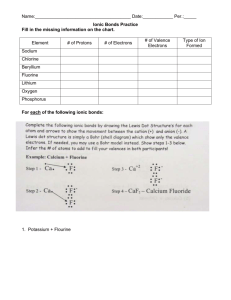Sodium is present as salt (sodium chloride, NaCl) in huge quantities
advertisement
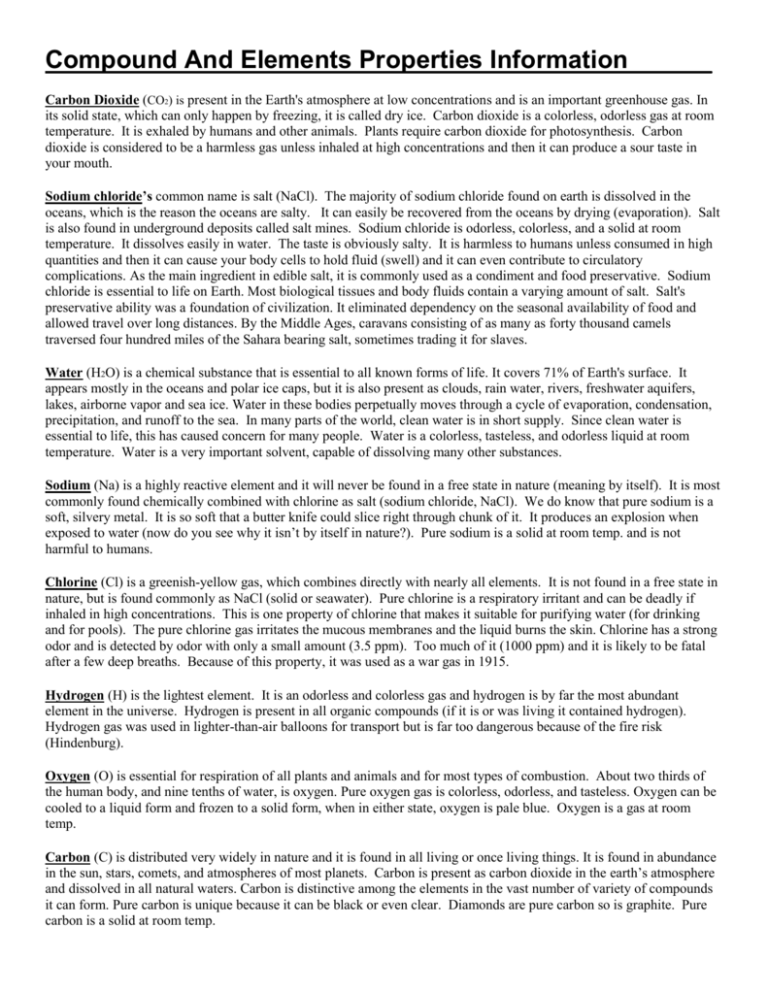
Compound And Elements Properties Information______ Carbon Dioxide (CO2) is present in the Earth's atmosphere at low concentrations and is an important greenhouse gas. In its solid state, which can only happen by freezing, it is called dry ice. Carbon dioxide is a colorless, odorless gas at room temperature. It is exhaled by humans and other animals. Plants require carbon dioxide for photosynthesis. Carbon dioxide is considered to be a harmless gas unless inhaled at high concentrations and then it can produce a sour taste in your mouth. Sodium chloride’s common name is salt (NaCl). The majority of sodium chloride found on earth is dissolved in the oceans, which is the reason the oceans are salty. It can easily be recovered from the oceans by drying (evaporation). Salt is also found in underground deposits called salt mines. Sodium chloride is odorless, colorless, and a solid at room temperature. It dissolves easily in water. The taste is obviously salty. It is harmless to humans unless consumed in high quantities and then it can cause your body cells to hold fluid (swell) and it can even contribute to circulatory complications. As the main ingredient in edible salt, it is commonly used as a condiment and food preservative. Sodium chloride is essential to life on Earth. Most biological tissues and body fluids contain a varying amount of salt. Salt's preservative ability was a foundation of civilization. It eliminated dependency on the seasonal availability of food and allowed travel over long distances. By the Middle Ages, caravans consisting of as many as forty thousand camels traversed four hundred miles of the Sahara bearing salt, sometimes trading it for slaves. Water (H2O) is a chemical substance that is essential to all known forms of life. It covers 71% of Earth's surface. It appears mostly in the oceans and polar ice caps, but it is also present as clouds, rain water, rivers, freshwater aquifers, lakes, airborne vapor and sea ice. Water in these bodies perpetually moves through a cycle of evaporation, condensation, precipitation, and runoff to the sea. In many parts of the world, clean water is in short supply. Since clean water is essential to life, this has caused concern for many people. Water is a colorless, tasteless, and odorless liquid at room temperature. Water is a very important solvent, capable of dissolving many other substances. Sodium (Na) is a highly reactive element and it will never be found in a free state in nature (meaning by itself). It is most commonly found chemically combined with chlorine as salt (sodium chloride, NaCl). We do know that pure sodium is a soft, silvery metal. It is so soft that a butter knife could slice right through chunk of it. It produces an explosion when exposed to water (now do you see why it isn’t by itself in nature?). Pure sodium is a solid at room temp. and is not harmful to humans. Chlorine (Cl) is a greenish-yellow gas, which combines directly with nearly all elements. It is not found in a free state in nature, but is found commonly as NaCl (solid or seawater). Pure chlorine is a respiratory irritant and can be deadly if inhaled in high concentrations. This is one property of chlorine that makes it suitable for purifying water (for drinking and for pools). The pure chlorine gas irritates the mucous membranes and the liquid burns the skin. Chlorine has a strong odor and is detected by odor with only a small amount (3.5 ppm). Too much of it (1000 ppm) and it is likely to be fatal after a few deep breaths. Because of this property, it was used as a war gas in 1915. Hydrogen (H) is the lightest element. It is an odorless and colorless gas and hydrogen is by far the most abundant element in the universe. Hydrogen is present in all organic compounds (if it is or was living it contained hydrogen). Hydrogen gas was used in lighter-than-air balloons for transport but is far too dangerous because of the fire risk (Hindenburg). Oxygen (O) is essential for respiration of all plants and animals and for most types of combustion. About two thirds of the human body, and nine tenths of water, is oxygen. Pure oxygen gas is colorless, odorless, and tasteless. Oxygen can be cooled to a liquid form and frozen to a solid form, when in either state, oxygen is pale blue. Oxygen is a gas at room temp. Carbon (C) is distributed very widely in nature and it is found in all living or once living things. It is found in abundance in the sun, stars, comets, and atmospheres of most planets. Carbon is present as carbon dioxide in the earth’s atmosphere and dissolved in all natural waters. Carbon is distinctive among the elements in the vast number of variety of compounds it can form. Pure carbon is unique because it can be black or even clear. Diamonds are pure carbon so is graphite. Pure carbon is a solid at room temp.



